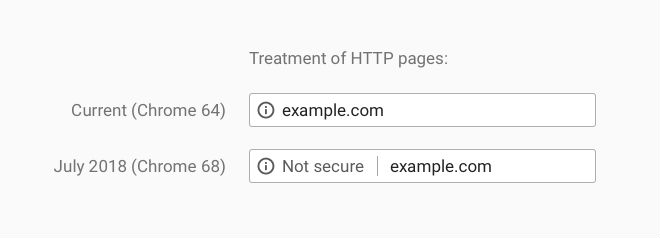Everyone is all about security and making sure their information isn’t going to end up in the wrong hands. Google has already been on top of that for some time and last year Google updated Google Chrome to show users which sites were considered secure by showing a “secure” label in the Omnibox for HTTP/HTTPS sites. Google is going one step further by marking all HTTP sites with a “not secure” label starting in version Chrome 68 that is due for release in July 2018.

Developers have already been making the transition for their sites to HTTPS and with the new version of Lighthouse, it’ll help developers who haven’t moved over to HTTPS yet, simple and easy. Another way to help developers move their sites over from HTTP to HTTPS is the new audit system in Lighthouse that helps developers find which resources a site loads using HTTP, and which of those are ready to be upgraded to HTTPS simply by changing the subresource reference to the HTTPS version.
Google was kind enough to share some stats of how Chrome handled security in 2017:
- Over 68% of Chrome traffic on both Android and Windows is now protected
- Over 78% of Chrome traffic on both Chrome OS and Mac is now protected
- 81 of the top 100 sites on the web use HTTPS by default
By now, you should already see “secure” in the Omnibox while using Chrome, letting you know that site is encrypted for you. In the interim, if you don’t see that the site is “secure,” that means the site you’re visiting currently doesn’t have any form of encryption on it.
It’s great to see Google stepping up and keeping everyone safe from sites that could take our information by showing which sites are not secure and making it easier for people to understand it. What do you think about version Chrome 68 showing HTTP sites as “not secure” starting in July? Let us know in the comments below or on Google+, Twitter, or Facebook.
[button link=”https://security.googleblog.com/2018/02/a-secure-web-is-here-to-stay.html” icon=”fa-external-link” side=”left” target=”blank” color=”285b5e” textcolor=”ffffff”]Source: google blog[/button]









